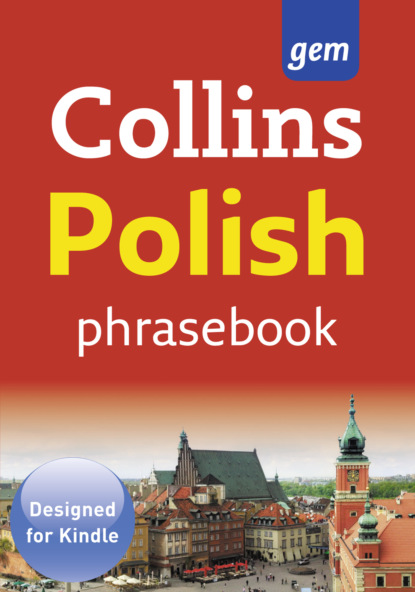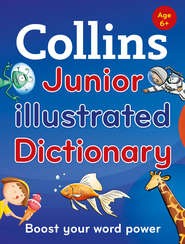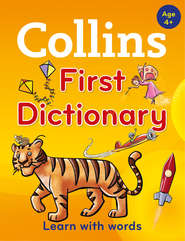По всем вопросам обращайтесь на: info@litportal.ru
(©) 2003-2025.
✖
Collins Gem Polish Phrasebook and Dictionary
Автор
Год написания книги
2019
Настройки чтения
Размер шрифта
Высота строк
Поля
Eating out (#litres_trial_promo)
Eating places (#litres_trial_promo)
In a bar/café (#litres_trial_promo)
In a restaurant (#litres_trial_promo)
Vegetarian (#litres_trial_promo)
Wines and spirits (#litres_trial_promo)
Menu reader (#litres_trial_promo)
Grammar (#litres_trial_promo)
Public holidays (#litres_trial_promo)
Dictionary (#litres_trial_promo)
EnglishâPolish (#litres_trial_promo)
PolishâEnglish (#litres_trial_promo)
About the Publisher (#litres_trial_promo)
Pronouncing Polish (#ulink_8704a9dc-c0b7-51ac-aa54-456e0235cba5)
Spelling and pronouncing Polish are not difficult once you know a few basic rules. This book has been designed so that as you read the pronunciation of the phrases, you can follow the Polish too. This will help you recognize how Polish is pronounced and give you a feeling for the rhythm of the language. Here are five simple rules to follow:
1 Some letters are marked with additional signs above or below them to indicate different pronunciation: Ä , Ä, Ä, Å, Å, Ï, Å, ź and ż.
Examples:
2 These consonants are pronounced differently in Polish than they are in English:
3 The consonants below are represented by two letters, but make just one sound:
4 The above consonants may appear in groups which donât exist in English, but are very typical in Polish, for example:
5 The remaining consonants: b, d, g, h, k, l, m, n, p, s, t, z are pronounced almost as in English. However, at the end of a word or when together with certain voiceless consonants, the pronunciation of some voiced consonants changes into their voiceless counterparts, for example b, d, g, w, z, ż and rz change into p, t, k, f, s, and sh (for both ż and rz), respectively.
Stress usually falls on the second-to-last syllable. We have indicated the stressed syllable by using bold in the pronunciation of the words.
Top ten tips (#ulink_7ad862b3-6b5a-567b-a055-3db3348d5a0b)
1 The percentage of alcohol allowed while driving is nil.
2 The most common toast is na zdrowie (to your health). Sometimes, âsto latâ is said, which means 100 years, with the hope that you will live to be 100 years old.
3 You might need to remove your shoes before entering a Polish home. If you see shoes lined up at the entrance, it means you are requested to remove yours as well.
4 Poland is a very religious country so remember to cover your shoulders and legs when visiting religious buildings.
5 Names are attached to particular days of the year. For example, if you are called Lech you will celebrate your name day on 12 August. Name day celebrations are as important as birthdays!
6 Dinner on Christmas Eve (Wigilia) consists of 12 courses.
7 There are four main meals in Poland: breakfast (pierwsze sniadanie), second breakfast (drugie sniadanie) at around 11 am, the main meal of the day at 4 pm, and supper between 8 and 9 pm.
8 Use Pan and Pani (Mr and Mrs) before peopleâs names.
9 Many older Poles still kiss a ladyâs hand to show good manners.
10 Side lights in cars must be switched on from dusk till dawn, and at all times from 1 October to the end of February.
Talking to people (#ulink_56539374-ced8-543f-9402-cf6a38bf52cf)
Hello/goodbye, yes/no (#ulink_03bd1de2-cf9e-539e-b39e-d57037d4f9fa)
Polish people can be quite formal in their greeting. If you donât know someone well, the best greeting to use is dzieÅ dobry (literally good day). This is what you should use if you are unsure how formal to be. CzeÅÄ is used among family and friends.
Key phrases (#ulink_dc8dfd0e-2a75-503d-88ba-89ca0680e20f)
> Dictionary (#u3d28dfba-9dc0-572b-9101-d49ed2ca6cd5)
Signs and notices (#ulink_cd04e108-28ad-59e7-8d85-933681fa9958)
Polite expressions (#ulink_6e59c5cd-e8b8-5ed0-9cca-b1622a079e11)
There are two forms of address in Polish: formal (pan/pani â Mr/Mrs) and informal (ty). You should always use the formal until you are invited to use the informal.
> Dictionary (#u3d28dfba-9dc0-572b-9101-d49ed2ca6cd5)
Celebrations (#ulink_72279e85-4de7-509a-b997-794586202078)
In Poland most people celebrate their name-days (imieniny), rather than birthdays (urodziny), although both occasions can be celebrated. The standard wish on this type of occasion is wszystkiego najlepszego! fshist-kye-go nay-lep-she-go! (all the best) For Easter â Wielkanoc â there isnât really a special wish, so people can just say WesoÅych ÅwiÄ t (merry holidays) the same as for the Christmas wish.
Making friends (#ulink_69fd0a07-21db-5965-9dc5-454cd490e702)
In this section we have used the familiar form ty for the questions. In Polish there is one form of question for first names and another for surnames, although in practice the latter form can be used for both first name and surname.
Вы ознакомились с фрагментом книги.
Приобретайте полный текст книги у нашего партнера:
Приобретайте полный текст книги у нашего партнера:











